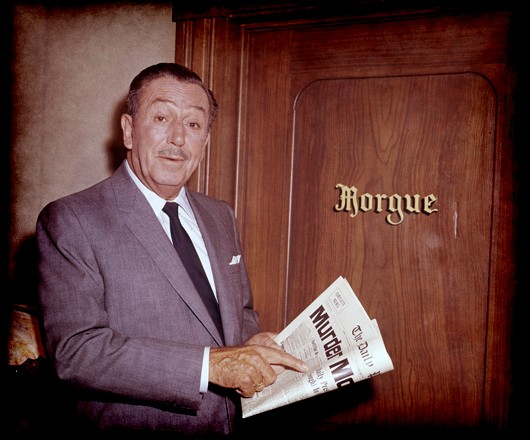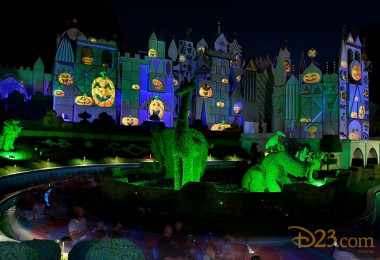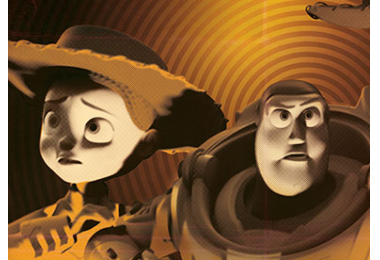give you goose bumps.
Beneath the Studio’s courtyards, streets, and brick-and-mortar buildings is a maze of concrete corridors originally constructed to house and maintain plumbing and electrical systems. There’s even a passageway that leads from the Animation Building to the Ink & Paint Building, which in the early days of the Studio during inclement weather was used to transport animation cels from one building to another. With low ceilings, pipes of every shape and size, and hidden rooms adjoining the long hallways, it’s a fitting backdrop for a spooky movie—and indeed this creepy concatenation of hallways is still sometimes used for film and television shoots. It was down in these murky depths, below the Ink & Paint Building, that Studio personnel once ventured to visit “The Morgue,” the aptly named set of rooms which, up until 1989, housed old scripts and a breathtaking collection of animation art—from concept art to cels. In the spirit of Halloween, D23 takes a look at the mystery of this resting place for animation art that was tucked beneath the grounds of the Studio for nearly 40 years.
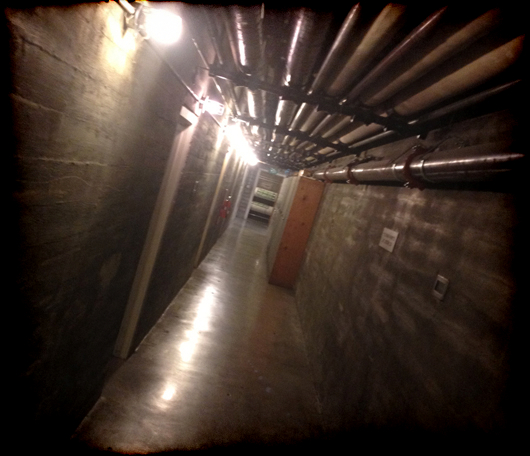
The Walt Disney Studios was originally built to be Walt Disney’s ultimate creative complex for animation, and some of the most iconic Disney animated films of all time have been produced there—Pinocchio, Dumbo, Bambi, Cinderella, Alice in Wonderland, Peter Pan, and many, many others. But when the films wrapped, all the creative inspiration, research, concept art, and animation had to be shelved somewhere to make room for the next project. A set of rooms beneath the Ink & Paint Building, which had just enough room to store everything, became that work’s final resting place.

Walt visited the morgue in the September 25, 1957 Disneyland television series episode “Adventure in Wildwood Heart.” “In our morgue, these shelves, tables, and file cabinets hold all our history as a motion picture studio,” he says in the episode, which you can see for yourself in the Walt Disney’s Legacy Collection, True-Life Adventures series, Volume 4: Nature’s Mysteries, available on DVD. “Here are the drawings, models, sketches, and backgrounds for every film we’ve ever made,” Walt points out in the introduction. “In these file cabinets are research materials of every kind and description. This room represents the repository, the well of our experience. And experience is the key to progress.” He then goes on to introduce A True-Life Fantasy: Perri, about the life of a squirrel in the forest and the only True-Life Fantasy ever produced.
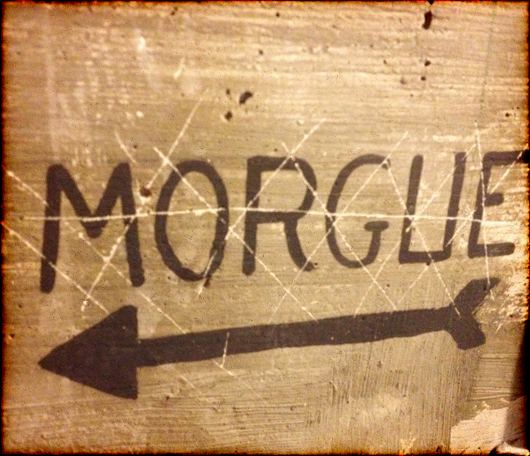
While most morgues house dead bodies, the Walt Disney Studios morgue was home to retired research and artwork in the hope it would inspire future artists. “They called it a morgue because that was a newspaper term for used, but still useable material such as photographs, back issues, and clippings,” Fox Carney, manager, Research, Animation Research Library, tells D23. “They probably took that from being familiar from the newspaper industry and terminology. The morgue wasn’t where things went to die. It was based upon what was used in the production for what was reusable or used for inspiration.” The Disney morgue housed ghosts of animation. Each file in the rows of shelves and cabinets had imprints of the past. And if you were to study the brush strokes and the textures of each piece of artwork long enough, the Studio felt, you could get a feel for how the original animator created the piece.
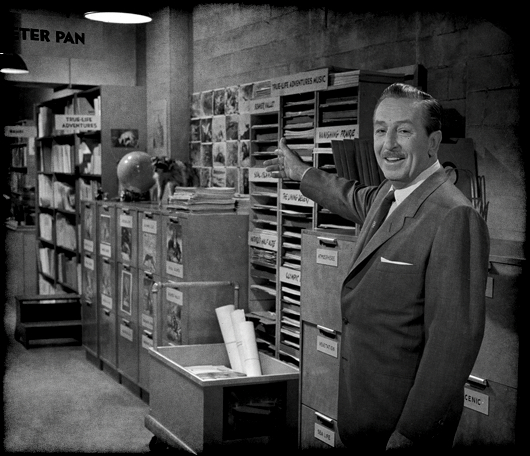
The morgue lost its name and cozy underground location in 1989, when it was moved to a larger Glendale facility, but you can still visit its original location—it’s now home to a copy center and some janitorial offices—on the Studio Lot today by walking down a long flight of stairs on the north side of the Ink & Paint Building and navigating a few corners of underground hallways. Though the maquettes, backgrounds, paintings and animation sketches are now long gone—safely stored in the state-of-the-art Disney Animation Research Library in Glendale—the spirit of the Walt Disney Studios morgue lives on today in the way Disney continues to build on the creative energy of the past. Fox sums it up nicely: “For Disney to invest the resources it takes into preserving and maintaining the art shows the commitment the Company has to its legacy.” And there is nothing scary about preserving such a rich, inspiring, and amazing history.



